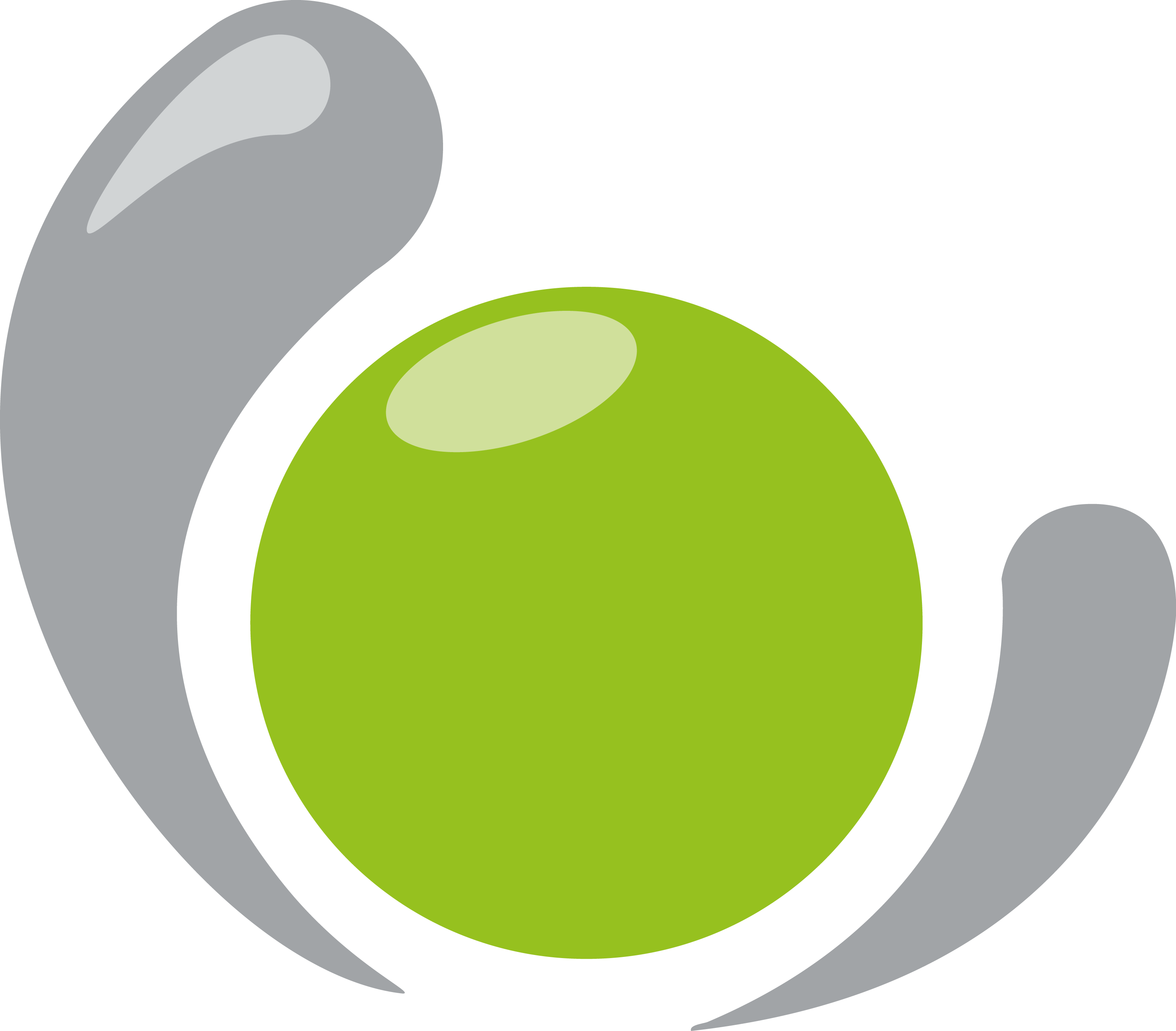Venous insufficiencies
For Hemodynamic Osteopathy, venous insufficiency is due to a decrease in the flow of deep vessels.
Contrary to what is taught until classically, the venous circulation is linear (the blood flows smoothly). Therefore the valves of the veins (pigeon’s nest) do not intervene in the venous circulation since the blood flows smoothly. These valves are non-return valves (for the blood), which only intervene when you produce muscular contractions related to locomotion or other. For example, getting up, coughing, urinating etc… This linear circulation is nowadays highlighted by the Doppler echo.
The capillaries of the deep vessels are located within the muscles unlike the capillaries of the superficial vessels. Thanks to the action of the MMP, the venules contained in the muscles will be subjected to phenomena of contraction and decontraction which can transform the muscles into venous pumps. These venous pumps, which are muscular, will be at the origin of blood pressure in the deep venous vessels.
Blood from the superficial vessels will be sucked up by the flow of the deep vessels at the junction between these superficial and deep vessels (venturi effect).
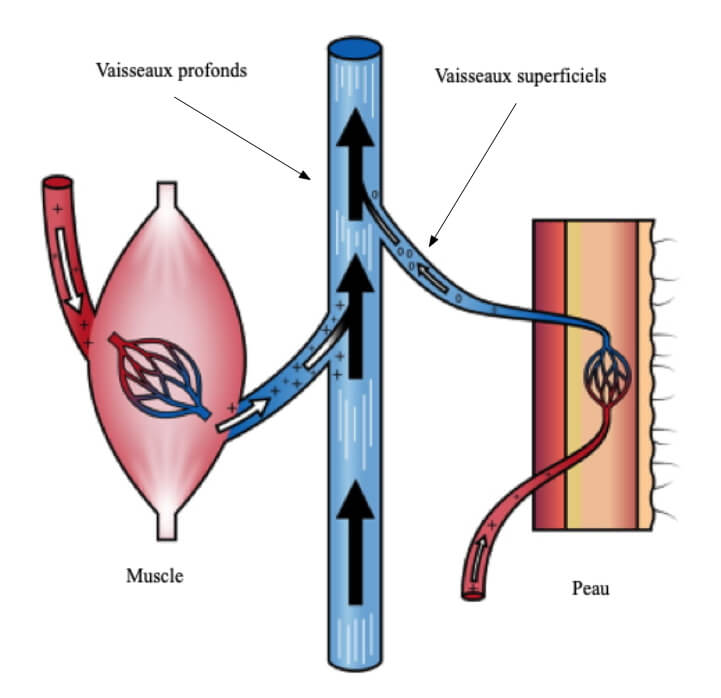
Why is MMP becoming ineffective?
Venous insufficiency results in a decrease in blood pressure in the deep vessels. This is due to a decrease in the effectiveness of MMP as a muscle pump. Starling’s First Law tells us that the more correctly the atrium of the heart fills up, the more effective the contraction of the ventricle will be. Simply put, the more you fill a balloon with water, the more pressure you apply around it will produce a powerful jet. This 1st law of Starling adapts perfectly to the muscle. Thus, the more a muscle is “spasmed”, the less it will be filled and the more its pumping function will be compromised…
Here we disregard the various pathologies that can depreciate muscle function such as diabetes, for example. We are dealing here with pathologies of the autonomous system of the MMP (outside the control of the nervous system).
A spasmed muscle will tend to shorten. The shorter it is, the less easily it fills up. The less it fills up, the less effective the venous pumping action will be. This is Starling’s first law (which concerns the heart) which is here adapted to muscle physiology.
A seized joint that is permanently mobilized by the action of the PMM will require extra effort from the muscles, which will slow down the action of the muscle pumps.
The fascias involved in the formation of muscle boxes may, when retracted, contribute to the decrease in the amplitude of intramuscular volumes or prevent the muscles from extending. In both of the above cases the muscle pump function will be disturbed.
The symptoms of venous insufficiency are the consequences of this decrease in flow (or and/or) of the body’s attempt to remedy it.
Treatments for Venous Insufficiency Syndrome
These treatments must follow a liberation of all the joints of the body, whatever the techniques used. Leaving a part of the joints “seized” would require an increase in muscular work, thus producing a decrease in motor activity conducive to venous return.
Treatments for venous insufficiency will therefore aim to free all the joints concerned as well as to return the muscles to their nominal working amplitudes. All the muscle chains must have the same rhythmicity (no muscle lesions). These techniques are gentle and have nothing to do with any drainage techniques.
Treatments last a few minutes (15mn) according to the therapists.
The 1st treatment will be effective for 3 days to a week.
The 2nd treatment will be effective for about 15 days.
The 3rd treatment will be effective for 1 month.
The 4th treatment will be effective for 2 months.
Thereafter a treatment every two months will be necessary, but we see more and more patients coming back with an almost permanent condition. Less or no sensation of heavy legs, thinner legs, etc… However, a bottom of venous insufficiency may persist, while not felt. A new treatment on a single leg can then demonstrate to the patient that the syndrome is not completely erased, one treated leg being light and the other appearing as heavy.
The practice of these techniques has shown that many patients are unaware of their venous insufficiency problems. For them, their condition was their norm.
During our treatments we treat one limb and immediately ask the patient to describe the difference in feeling between the two limbs (lower or upper). This allows them to become aware of the difference between a normal limb and a pathological limb. Many patients do not know that they have venous insufficiency.
Some encouraging studies
Study concerning the effects of MMP treatments observed by the LUNAR iDEXA of GE (General Electric). Here are the specific effects of a treatment concerning a 26-year-old man suffering from a symptom of heavy legs.
Both legs were treated in the same way, this one reported tingling sensations in the left lower limb during treatment (which may mean the removal of a “vascular obstacle”).

Protocol
5 scan passages :
- At the beginning of the decubitus position…
- 10 minutes later, just before the start of treatment (PMM)
- At the end of treatment
- 10 minutes after treatment
- And finally an hour after treatment
During the entire test phase the subject remained lying down.
Developments during treatment

– 607g à gauche
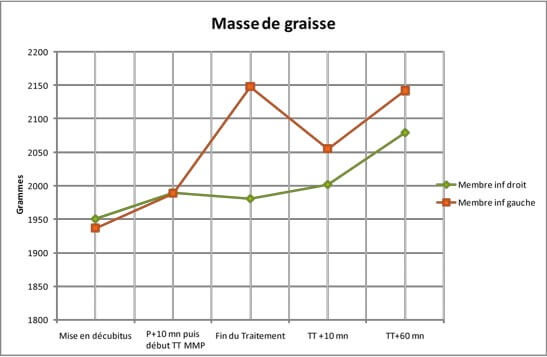
+ 205g à gauche
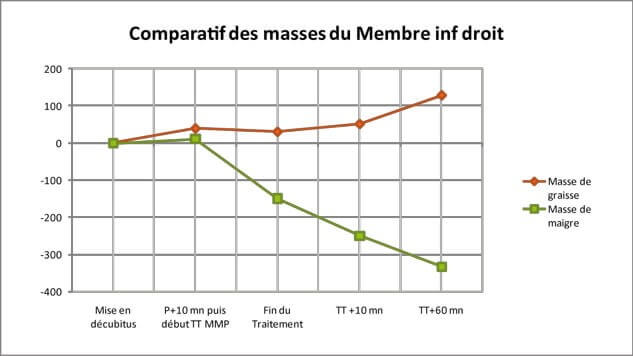
-332g masse de maigre
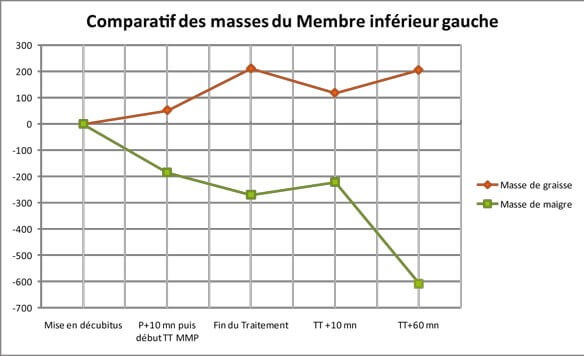
-607g masse de maigre
GE Results
- Sum of the two lower limbs
- Lean mass -930g
- Fat mass +481g
- Swiss Study (Nestlé)
- Physiological variation with 95% confidence (whole body) :
- Lean mass greater than 699g
- Fat mass greater than 474g
With courtesy of GE Healthcare – © 2009
Without wanting to interpret these results beyond the reasonable, we can still note the positive and conclusive effect of our techniques, even though in this particular case we did not always find such striking results.
Statistical studies
A prospective study concerning the comparative treatment of Heavy Legs Syndrome was carried out between Manual Lymphatic Drainage (Kinesitherapy) vs. Hemodynamic Osteopathy treatments on a population of 30 subjects.
Since then, theses carried out by students have given the same results. We can talk about hundreds of cases.
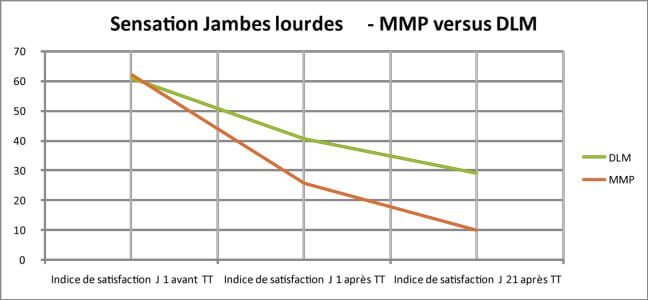
We have observed that hemodynamic osteopathy (OH) treatments are almost three times more effective (at d+21) in terms of satisfaction indices than conventional manual lymphatic drainage (MLD). The duration of the effectiveness of osteopathic treatments is also superior: at most one week for MLD, several months for OH treatments. The frequency and duration of the sessions is also lower in OH.
The latest clinical feedback tends to show that the results of our treatments can be almost permanent.
These treatments are set up to treat all the symptoms from venous insufficiency to chronic fatigue for which results are present.
